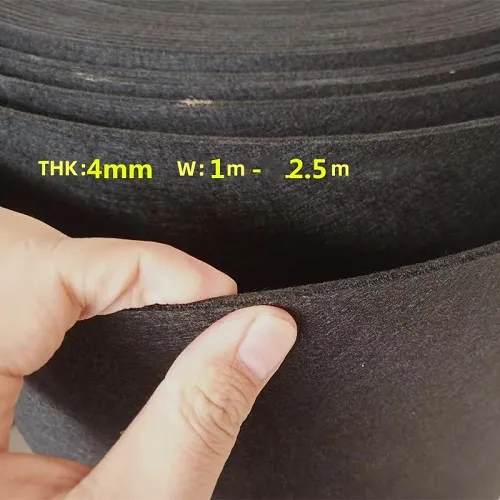types of felt
Exploring the Types of Felt A Guide to This Versatile Material
Felt is a unique fabric that boasts a rich history and a variety of applications, making it a favorite among crafters, artists, and manufacturers alike. Originating from ancient practices, felt is created through a process of matting, condensing, and pressing fibers together. The resulting material is not only durable but also incredibly versatile. In this article, we will explore the different types of felt, their characteristics, and their various uses.
1. Wool Felt
Wool felt is perhaps the most recognized type of felt. Made from natural sheep wool, this felt is known for its softness, warmth, and excellent insulation properties. Wool felt is often used in crafting, clothing, and various home décor projects. It is available in an array of colors and can be dyed easily, making it a preferred choice for artists who want vibrant, long-lasting results. Wool felt is also biodegradable, adding an eco-friendly aspect to its appeal.
2
. Synthetic FeltIn contrast to wool, synthetic felt is made from man-made fibers such as polyester or acrylic. This type of felt is typically less expensive and more resistant to moths and mildew than its natural counterpart. Synthetic felt comes in a wide range of colors and thicknesses, making it ideal for various crafts and applications. It is particularly popular in school projects, costume making, and other DIY activities, as its durability allows it to withstand heavy use.
3. Eco-Felt
types of felt

Eco-felt is an increasingly popular choice among environmentally conscious crafters. Made from recycled plastics or post-consumer materials, eco-felt aligns with sustainable practices. While it may not have the same luxurious feel as wool felt, eco-felt is durable, weather-resistant, and easy to care for, making it suitable for outdoor projects and items that require cleaning. Its availability in vibrant colors and textures makes it an appealing option for creative projects.
4. Craft Felt
Craft felt is often made from synthetic materials and is specifically designed for crafting purposes. It is widely used in schools for educational projects, including costumes, decorations, and art activities. Craft felt is affordable and comes in large sheets, making it accessible for large groups or classrooms. Although it may lack the quality and durability of wool felt, its ease of use and availability make it a staple in the crafting community.
5. Blended Felt
Blended felt combines both natural and synthetic fibers to create a unique material that offers the best of both worlds. This type of felt can provide the softness of wool while also incorporating the durability and stain resistance of synthetic fibers. Blended felt is often used in upholstery, fashion accessories, and other creative applications where a balance of aesthetics and functionality is desired.
Conclusion
With its myriad types, felt is a versatile and essential material in both crafting and manufacturing. Whether you choose wool, synthetic, eco-felt, craft felt, or blended felt, each type offers unique properties that cater to different needs. By understanding the characteristics of each type, you can select the right felt for your next project, unleashing your creativity and bringing your ideas to life. Whether for personal use or commercial application, exploring the world of felt can lead you to endless possibilities.
-
What Makes Felt a Great Choice?NewsNov.19,2024
-
Total Mixed Ration (TMR) Feed for CattleNewsNov.19,2024
-
The Ultimate Guide for Felt Polishing WheelsNewsNov.19,2024
-
Industrial Felt for Various ApplicationsNewsNov.19,2024
-
Felt Makeup Bags and Inserts BagsNewsNov.19,2024
-
Choosing the Right Hotel TowelsNewsNov.19,2024
-
Your Go-To Guide For Affordable Wholesale Wool FeltsNewsOct.31,2024







